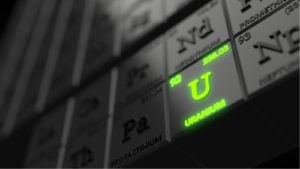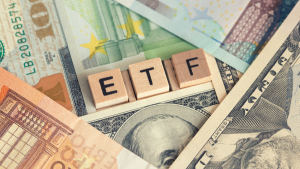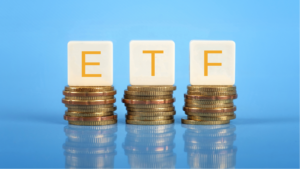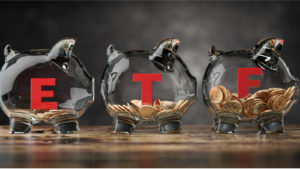In fact, Congress just passed the Russian uranium import ban, which now unlocks about $2.7 billion to expand U.S. nuclear fuel production. In addition, according to MarketWatch.com, “A ban on U.S. imports of Russian uranium is set to shake up the market for nuclear power, and lift prices back above $100 a pound for the nuclear fuel which has been tight on supplies.”
Fueling further upside, multiple nations at the 28th United Nations Climate Change Conference (COP28) signed a declaration to triple nuclear energy by 2050.
Uranium demand is also expected to jump 127% by 2030. By 2040, demand could be up by 200%, creating a potential 240-million-pound deficit. Worse, the deficit could continue to widen with growth in annual demand expected to triple by 2050, as noted by NexGen Energy.
And, according to Cameco (NYSE:CCJ) CEO Tim Gitzel uranium prices are soaring higher due to global factors that will “persist for years,” as noted by Seeking Alpha. “Market tightness caused by supply chain challenges, ongoing mine depletion, declining secondary supplies, and a decade of underinvestment amid low market prices likely will persist well into the next decade.”
While uranium prices and related stocks soared on the news, many could still see higher highs, including the seven below.
Cameco (CCJ)

With uranium prices rocketing higher, Cameco blasted from a low of about $40 to $49.83. From here, with supply-demand issues, and the Russian import ban, I’d like to see CCJ test $60.
Granted, earnings weren’t so hot. EPS came in at 13 cents, which missed estimates for 26 cents. Revenue slipped to $634 million from $687 million. However, those numbers were still in-line with Cameco’s estimates. Plus, analysts are far more focused on the long-term positive uranium thesis than recent earnings.
In fact, according to RBC Capital, as quoted by InvestorPlace contributor Josh Enomoto, “This is a fundamentally solid result for Cameco. The long-term positive uranium thesis remains intact, Cameco continues to execute well, and would be buyers on weakness.”
Bank of America also added Cameco to its U.S. 1 list. Goldman Sachs also raised its price target on CCJ to $56, with a buy rating. “With nations globally shifting towards nuclear power as a low-carbon and dependable electricity source, the demand for uranium is expected to rise significantly,” added TipRanks.com.
NexGen Energy (NXE)

Recent weakness is an opportunity in NexGen Energy (NYSE:NXE), which is developing the Rook I Project into the largest, low-cost-producing uranium mine globally, according to the site.
After pulling back from $8.88, NXE found strong support at $7 and is starting to pivot higher. From its last traded price of $7.61, I’d like to see it initially retest $8.88 and head to $10.
Helping, the company is confident about the future of the uranium market. It also heavily focuses on its Rook I project. NXE is reportedly in the final stages of permitting for the Rook I project and could start construction shortly. Plus, that project is backed with substantial funds of about $930 million in cash and liquid assets.
In addition, the company’s CEO “emphasized the growing recognition of nuclear energy and the need for new uranium sources, positioning the Rook I project as a key supplier,” as noted by Investing.com.
Denison Mines (DNN)

Denison Mines (NYSEAMERICAN:DNN) been in a solid uptrend since bottoming out in June 2023.
In fact, since then DNN has held strong support at its 50- and 200-day moving averages, just as it’s doing again now. After pulling back to about $2.02, DNN is again pushing higher. From its last traded price of $2.10, I’d like to see it test $3 near term.
Fueling upside, David Cates, President and CEO of Denison, noted:
“Denison’s portfolio of uranium reserves, resources, and physical holdings has greatly appreciated in value through late 2023 and into early 2024, as positive sentiment in the uranium and nuclear energy markets has sustained and uranium prices have rapidly increased,”
He added:
“As Denison has avoided entering low-priced uranium supply contracts in recent years and has held its physical uranium investment to support future project financing efforts for Phoenix, we are now in an enviable spot with significant uncommitted uranium production and physical holdings potentially available to the market at time of expected scarcity.”
Uranium Royalty Corp. (UROY)

We can also look at Uranium Royalty (NASDAQ:UROY), the world’s only uranium-focused royalty and streaming company and the only pure-play uranium listed company. It provides uranium commodity price exposure through strategic acquisitions in uranium interests, including royalties, streams, debt and equity in uranium companies, as well as through trading of physical uranium, as noted by the company.
In short, the company earns a percentage of the revenue generated from uranium and production without having to deal with the risk and costs of direct operations.
Over the last few months, UROY did drop from about $3.80 to a low of $2.20. However, it is slowly starting to bounce back, last trading at $2.65. From here, given the uranium supply-demand issue, and the Russian import ban with potential retaliation, I’d like to see UROY retest its $3.80 high again near term.
Earlier this year, H.C. Wainwright analysts reiterated a buy rating on UROY with a price target of $7.70. The firm cited UROY’s “strategic focus on acquiring new royalties, physical uranium, and other interests that could provide flexibility and strong positioning within the industry,” as noted by TipRanks.com.
Global X Uranium ETF (URA)

Or, we can diversify with exchange-traded funds (ETFs) like the Global X Uranium ETF (NYSEARCA:URA).
With an expense ratio of 0.69%, the URA ETF holds 48 stocks in companies involved in uranium mining and the production of nuclear components, including those in extraction, refining, exploration, or manufacturing of equipment for the uranium and nuclear industries. Some of its top holdings include Cameco Corp., NexGen Energy, Paladin Energy (OTCMKTS:PALAF), Uranium Energy Corp. (NYSEAMERICAN:UEC), and Energy Fuels Inc. (NYSEAMERICAN:UUUU) to name a few.
Since bottoming out at around $27 in March, the URA ETF is back up to $31.52. From here, if it can break above resistance around $32, it could test $40.
Moving forward, uranium prices and ETFs could push even higher on Russian retaliation. According to analysts at Citi, “Retaliation by Russia and a potential export ban would be more destabilizing for uranium prices, included in our bull case scenario with prices averaging $121/lb and $151/lb in 2024 and 2025, respectively,” as noted by Seeking Alpha.
Sprott Funds Uranium Mining ETF (URNM)

We can also look at the Sprott Funds Uranium Mining ETF (NYSEARCA:URNM).
With an expense ratio of 0.75%, the ETF invests at least 80% of its total assets in securities of the North Shore Global Uranium Mining Index. The Index is designed to track the performance of companies that devote at least 50% of their assets to the uranium mining industry, which may include mining, exploration, development, and production of uranium, or holding physical uranium, owning uranium royalties, or engaging in other, non-mining activities.
Since bottoming out at around $45, the URNM ETF rallied back to $55.17. From here, if it can break above resistance at around $57.50, it could test $70 a share, I believe.
VanEck Uranium and Nuclear Energy ETF (NLR)

There’s also the VanEck Uranium and Nuclear Energy ETF (NYSEARCA:NLR),
With an expense ratio of 0.61%, the ETF seeks to replicate the price and yield performance of the MVIS Global Uranium & Nuclear Energy Index, which is intended to track the overall performance of companies involved in uranium mining or uranium mining projects.
Since bottoming out at around $70 in late February, the NLR ETF ran to $85.22. From here, I’d like to see it closer to $90 as the uranium market heats back up. With supply-demand issues, and the latest ban on Russian imports, coupled with potential retaliation, uranium prices could easily see higher highs, near term.
On the date of publication, Ian Cooper did not hold (either directly or indirectly) any positions in the securities mentioned. The opinions expressed in this article are those of the writer, subject to the InvestorPlace.com Publishing Guidelines.
Ian Cooper, a contributor to InvestorPlace.com, has been analyzing stocks and options for web-based advisories since 1999.
